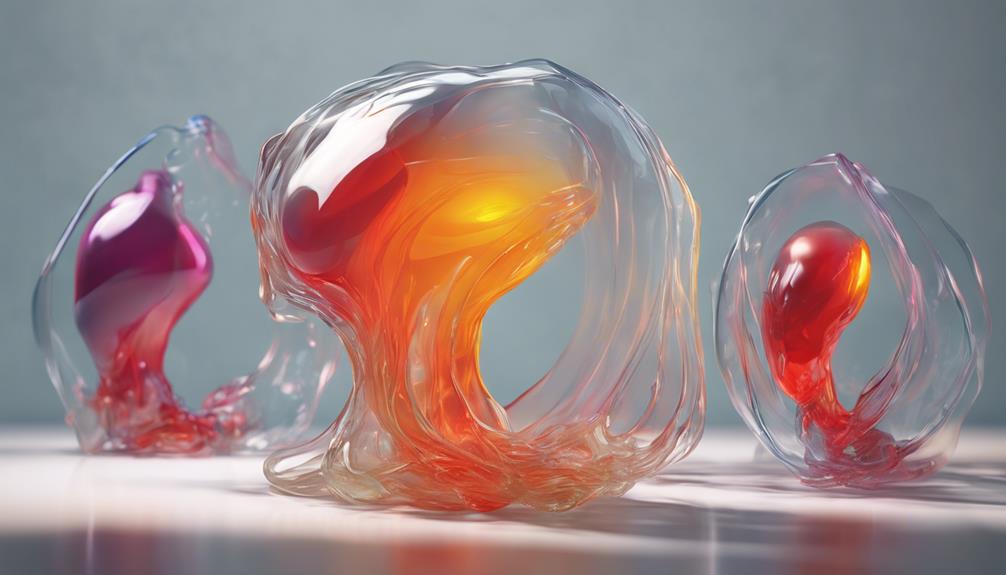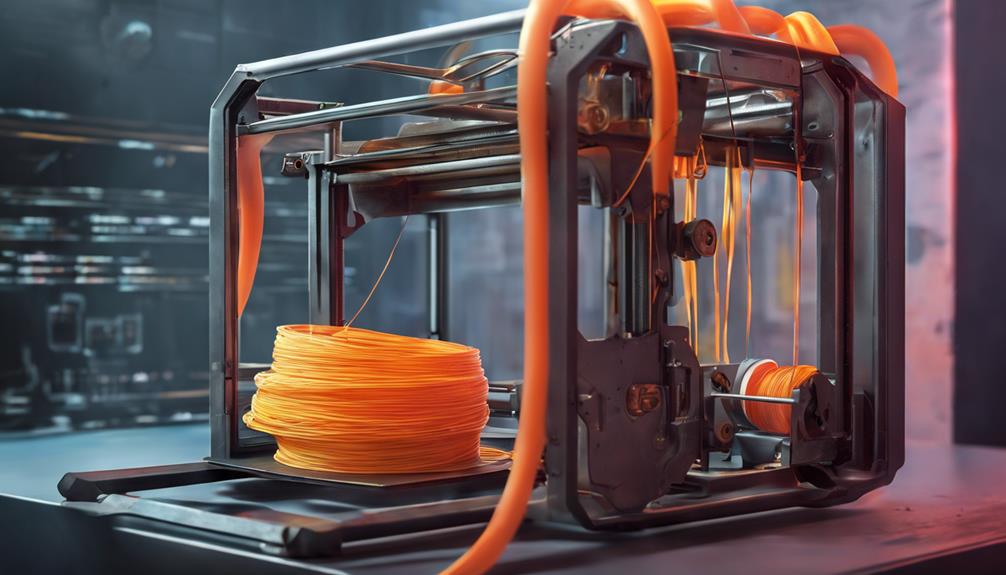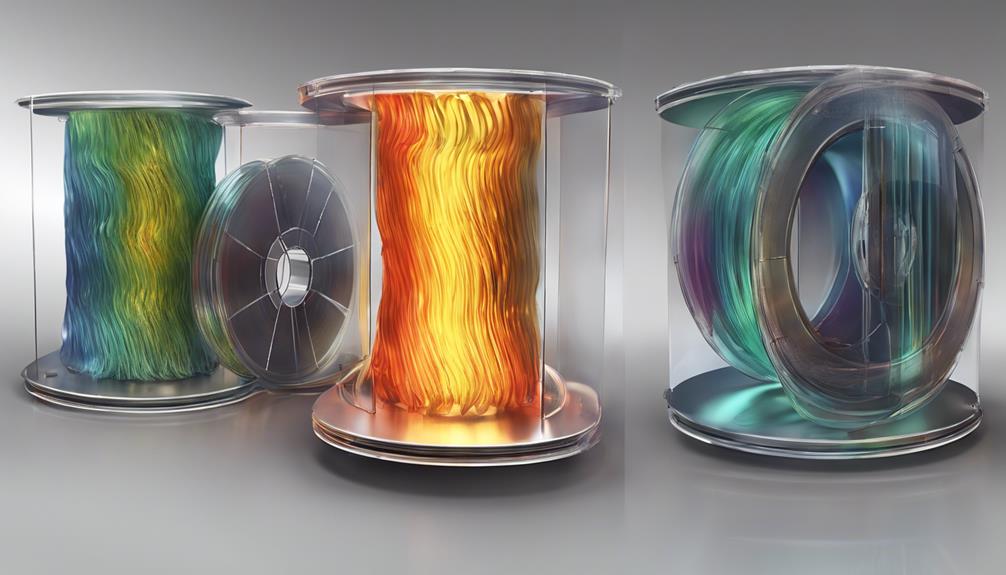Understanding the shifts that 3D printing filaments undergo is vital for optimizing material performance. From the glass transformation temperature (Tg) to the impact on mechanical properties, these changes hold the key to achieving consistent and reliable prints. By exploring how different filaments react at specific temperatures and how this knowledge can be harnessed to enhance print quality and functionality, we can access a world of possibilities in material science and additive manufacturing. Stay tuned to discover how filament shifts can revolutionize your printing experience and product outcomes.
Understanding Glass Transition Temperature

Understanding the Glass Transformation Temperature (Tg) is paramount in comprehending the fundamental shift a material undergoes from a rigid to an amorphous state. Tg signifies the point at which a material shifts from a solid, rigid state to a rubbery, amorphous state due to the intermolecular forces locking molecular motion.
This critical temperature varies among filaments, such as PETG with a Tg around 80-82°C and TPE ranging between 60-130°C. Knowledge of a material's Tg is essential for predicting its behavior under heat and selecting suitable filaments for specific applications.
Tg Vs. Tm: Key Differences
A clear distinction between Glass Transition Temperature (Tg) and Melting Temperature (Tm) is vital for understanding the thermal behavior of materials in various applications.
Tg marks the shift from a rigid to an amorphous state in materials, indicating the point where a solid becomes rubbery, affecting its mechanical properties. On the other hand, Tm represents the temperature at which a material changes from a solid to a liquid state.
While Tg signifies the loss of tensile strength and rigidity in a material under heat, Tm indicates the point of complete liquefaction.
Understanding the differences between Tg and Tm is essential for selecting suitable materials and processing conditions in applications where thermal behavior plays a significant role.
Filament Behavior in Applications

In practical applications of 3D printing, the behavior of filaments plays a significant role in determining the quality and functionality of the printed objects. Filaments exhibit specific characteristics based on their glass shift temperature (Tg), affecting their performance in various applications. Understanding the Tg of filaments is essential, as it signifies the shift from a rigid to an amorphous state, impacting their behavior under heat.
For instance, filaments like ABS, with a Tg of 105°C, are suitable for outdoor use due to their high-temperature resistance. By aligning the bed temperature with the filament's Tg, issues such as warping can be minimized, ensuring successful and durable 3D prints tailored to specific application requirements.
High-Temperature Resistance Selection
For applications requiring high-temperature resistance, selecting filaments with elevated Glass Transformation Temperatures (Tg) is vital. Filaments like ABS, Polycarbonate, and ASA are recommended for such applications due to their higher Tg values, which help prevent deformation when exposed to heat. These materials exhibit improved stability and strength at elevated temperatures compared to filaments with lower Tg values like PLA.
High-Temperature Resistance Selection is essential in industries such as automotive, aerospace, and manufacturing, where parts are subjected to heat stress. By choosing filaments with appropriate Tg levels, designers and engineers can make sure that their 3D printed components maintain their structural integrity and functionality in high-temperature environments.
Enhancing Tg Through Annealing

When considering materials for high-temperature applications, the process of annealing presents a crucial method for enhancing the Glass Transformation Temperature (Tg) of 3D printed components.
Annealing involves heating the printed part to a specific temperature and then gradually cooling it. This thermal treatment helps relieve internal stresses, increase molecular alignment, and enhance the overall structural integrity of the part.
Frequently Asked Questions
Can Tg Values Vary Within the Same Type of Filament?
Yes, glass conversion temperature (Tg) values can vary within the same type of filament. This variance can be influenced by factors such as manufacturing processes, additives, and specific formulations, leading to differences in Tg values even within identical filament types.
How Does Tg Influence the Flexibility of 3D Prints?
The glass transformation temperature (Tg) influences the flexibility of 3D prints by indicating the point where materials shift from rigid to amorphous states. Understanding Tg helps in selecting filaments suitable for desired flexibility in 3D printing applications.
Is There a Relationship Between Tg and Print Speed?
The connection between glass shifting temperature (Tg) and print speed is indirect. While Tg influences material behavior, affecting print settings like temperature, it doesn't directly govern print speed. Best print speeds are determined by factors like material properties, printer capabilities, and desired print quality.
Can Annealing Improve the Tg of All Types of Filaments?
Annealing has the potential to enhance the glass transformation temperature (Tg) of various filaments by strengthening molecular bonds. While effective for many types, the impact of annealing may vary based on filament composition and the specific material properties involved.
What Factors Affect the Accuracy of Tg Measurements in Filaments?
Accurate glass transformation temperature (Tg) measurements in filaments are influenced by factors such as sample preparation, measurement techniques, and environmental conditions. Understanding and controlling these variables are vital for precise Tg determination, ensuring material behavior predictability and application suitability.
Conclusion
To sum up, the glass transformation temperature (Tg) plays a pivotal role in predicting material behavior and ensuring successful 3D prints. Selecting filaments with higher Tg values, such as ABS with a Tg of 105°C, is vital for industries requiring high-temperature resistance.
Notably, a study found that aligning bed temperatures with Tg values led to a 30% reduction in warping, resulting in improved performance in various applications.